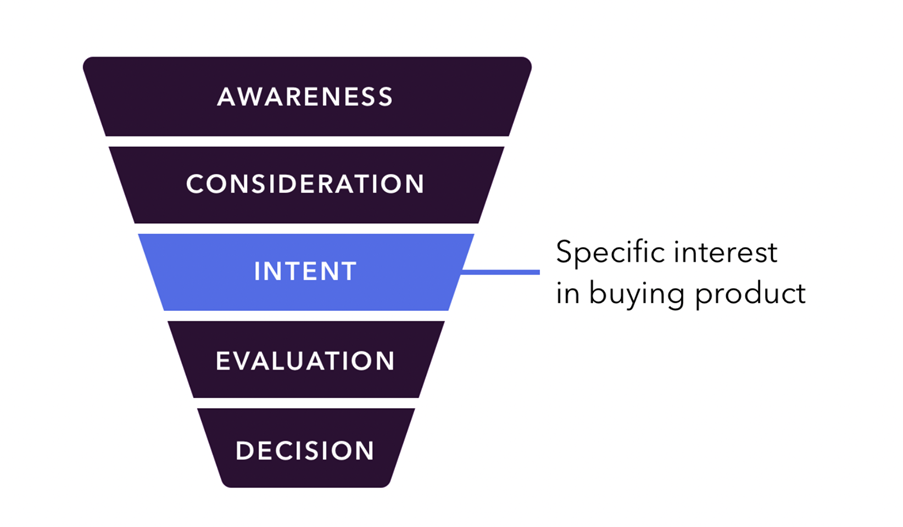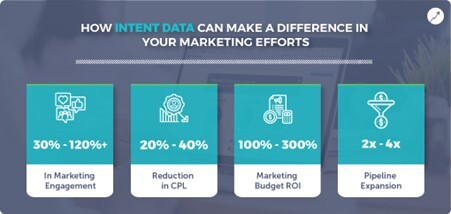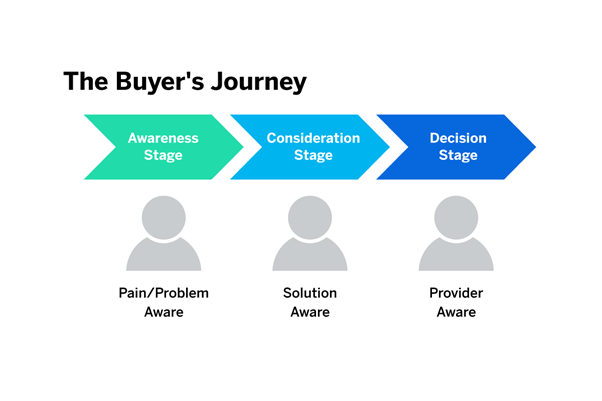Intent data is a powerful tool for businesses looking to effectively reach their target audience and understand their clients' behaviors. It allows companies to create more personalized experiences and tailor their products or services to the specific needs of their clients. By providing insights into customer intent, intent data can help businesses optimize their marketing strategies, increase customer engagement, and ultimately generate more revenue.

In the dynamic world of B2B sales, understanding buyer behavior based on their persona and identifying potential clients who are actively researching and considering purchases is vital. This is where intent data plays a crucial role. Intent data provides valuable insights into a prospect's interests, preferences, and purchase intent signals. By leveraging intent data effectively, B2B sales teams can enhance prospect targeting, personalize outreach, prioritize leads, and increase sales efficiency.
Intent data can be a powerful tool for businesses in every industry, but understanding how to use it for SEO success can be intimidating. Knowing how to harness intent data and use it to drive more organic traffic to your website is essential for any business looking to maximize its SEO efforts. In this blog post, we'll explore what intent data is, how it can be used to improve SEO, and how businesses can get the most out of their SEO strategy with intent data.
Intent Data: Unveiling the Types
Intent data refers to the information collected on potential buyers' activities, behaviors, and interactions that indicate their purchase intent. Buyer personas are used to generate intent data by helping to identify and segment users with similar interests. For example, a marketer might focus on users who are looking for a particular product or service. By understanding the type of product or service they are searching for, the marketer can create content relevant to each stage of the funnel such as TOFU, MOFU, or BOFU content that is more likely to attract that user. This can help to increase conversions and the overall effectiveness of the content.
Overall, intent data in SEO can be a powerful tool for targeting and engaging users. By understanding the types of intent data and how buyer personas can help, marketers can create more effective and tailored content to meet users' individual needs.
Intent data refers to information collected on potential buyers' activities, behaviors, and interactions that indicate purchase intent. Three main types are:
- First-Party Intent Data: Directly from digital properties (e.g., website visits, content downloads).
- Third-Party Intent Data: From external sources and vendors, offering a broader perspective.
- Behavioral Intent Data: Captures online activities, providing insights into interests and preferences.

Intent data can provide valuable insights into prospects' interests and preferences. It can be divided into three categories: commercial intent data, content intent data, and behavioral intent data. Commercial intent data reflects a prospect's purchase-related activities, content intent data reveals a prospect's research and engagement with content, and behavioral intent data captures online activities and interactions. By leveraging intent data, businesses can better understand their prospects and optimize their sales and marketing outreach accordingly.
Gathering and Analyzing Intent Signals
The Process of Intent Data Collection Intent data is collected through various methods and technologies, such as website tracking, cookies, IP tracking, and data partnerships with third-party providers. Once collected, intent data is processed and analyzed to identify purchase intent signals and patterns. This involves using advanced analytics tools, machine learning algorithms, and data processing frameworks to derive actionable insights from the vast amount of information collected.
Steps involved in collecting and analyzing Intent data:
1. Identifying user intent: The first step in collecting intent data is to identify what the user is looking for. This can be done by analyzing the words used in search queries, the context of the query, and the behavior of the user.
2. Gathering data: After the intent has been identified, the next step is to collect relevant data. This includes web page visits, clicks, and downloads, as well as demographic information about the user.
3. Analyzing data: The collected data is then analyzed to identify patterns and trends. This helps create a better understanding of the user’s intent, which can then be used to create targeted campaigns and content.
4. Creating insights: The analysis of the data also helps identify potential opportunities and insights. This data can be used to develop more effective strategies and campaigns.
5. Testing and optimizing: Finally, the data collected and analyzed can be used to test and optimize campaigns and content. This helps ensure that the content is relevant and engaging to the user.
It is important to categorize intent data into explicit and implicit intent data. Explicit intent data is collected from user behavior that conveys the user's intent. For example, a user searching for a specific product or service would be considered explicit intent data. Implicit intent data is collected from user behavior that may not be as direct but still conveys a user's intent.
This could include pages visited, time spent on pages, and other on-site behavior. By collecting and categorizing intent data, marketers can better understand their customers and create more effective content.
Categorizing Intent Data: Explicit vs. Implicit
Explicit Intent Data
Explicit intent data is based on the information provided directly by prospects themselves, such as through surveys, questionnaires, or contact forms. It offers insights into their specific needs, pain points, and purchasing intentions. While explicit intent data provides valuable information, it is limited to the prospects who voluntarily provide it.
Implicit Intent Data
Implicit intent data is derived from a prospect's online behaviors and interactions. It captures the prospect's interests and engagement levels without them explicitly stating their intentions. Implicit intent data provides a broader view of a prospect's interests and preferences, helping sales teams understand their potential needs and tailor their approach accordingly.
Implicit intent data can be a powerful tool for SEO professionals. By gaining an understanding of a prospect's online behaviors and interests, SEO professionals can create a more targeted and personalized approach to their content strategy. This helps ensure that content is tailored to the right audience and is more likely to engage them.
Leveraging Intent Data for B2B Sales Success
Implementing intent data in the B2B sales process brings numerous benefits, significantly improving conversion rates and deal closures. Intent data provides invaluable insights into B2B buyer behavior, informing sales strategies to better understand buyer interests and target potential customers.
Moreover, intent data facilitates identifying and segmenting buyers for more tailored messaging and offers, enhancing the likelihood of closing deals. By leveraging intent data, sales teams can reduce customer acquisition costs, expedite sales cycles, and maximize sales resource effectiveness.
Intent data provides insights into the most resonant messaging for buyers, enabling more effective campaigns and efficient resource allocation. The result is a streamlined B2B sales strategy that capitalizes on the power of intent data for enhanced performance and success.
Key Advantages of Intent Data:
1. Enhanced Prospect Targeting and Segmentation
Intent data empowers sales teams to segment and target prospects based on real-time buyer intent signals. Understanding prospects' interests enables tailored messaging, resulting in higher engagement and conversion rates. This data optimization also benefits SEO efforts by aligning content with prospect search topics, improving organic search visibility.

2. Personalized Sales Outreach
Intent data enables personalized outreach, building stronger relationships, establishing trust, and increasing conversion likelihood. By utilizing SEO and understanding prospect search terms, content can be crafted to address their interests, enhancing top-of-mind awareness and conversion rates.
3. Prioritizing Leads for Efficiency
Leveraging intent data helps identify and prioritize leads with high purchase intent, optimizing sales efforts. This allows sales teams to focus on prospects more likely to convert, streamlining the process and improving efficiency. Intent data also provides insights into customer behavior, allowing for targeted campaigns.
4. Increasing Sales Efficiency and Productivity
Intent data aids in identifying and engaging with the most qualified leads, reducing time wasted on uninterested prospects. By targeting prospects with high purchase intent, sales teams maximize efficiency and productivity, resulting in higher conversion rates and revenue. It also informs pay-per-click campaigns and improves overall SEO strategy.
How to Implement Intent Data in the Sales Process
To effectively implement intent data in the sales process, consider the following strategies:
1. Integrating with CRM Systems and Sales Tools
Integrate intent data into CRM systems and sales tools for seamless access, bridging the gap between marketing and sales teams. Real-time insights into consumer behavior inform targeted marketing and sales strategies, allowing for personalized experiences and optimizing the sales process.

2. Leveraging Intent Data for Lead Scoring and Qualification
Use intent data as a critical factor in lead scoring, prioritizing leads showing high intent signals. Prioritize leads and categorize them into MQLs or SQLs showing high intent signals and allocate appropriate resources and attention accordingly. This helps allocate resources and attention efficiently, ensuring efforts are focused on leads most likely to convert.
3. Prioritizing Outreach for B2B Lead Generation
Provide sales teams with tools to prioritize outreach based on prospect intent and engagement levels. This enables more focused efforts, reaching prospects actively seeking solutions and improving overall efficiency.
4. Integrating Intent Data with Other Sources
Combine intent data with demographic and firmographic information for a holistic view of prospects. This comprehensive understanding allows for more effective tailoring of sales strategies.
5. Harnessing Predictive Analytics
Utilize predictive analytics to identify potential buyers and anticipate their needs based on intent data. This proactive approach positions sales teams as trusted advisors, engaging prospects early in their buying journey.

6. Frequent Intent Data Review and Updates
Regularly review and update intent data to ensure accuracy and relevancy. Staying updated with the latest intent data is crucial as prospects' interests and behaviors evolve, ensuring informed decision-making.

In Conclusion
In the competitive realm of B2B sales, leveraging intent data is paramount for enhanced conversions and deal closures. S2W Media offers expertise in creating a robust intent data strategy, optimizing your website, and boosting sales. Our services empower you to make informed decisions on marketing tactics, target the right customers, and craft tailored content. Embrace intent data with S2W Media to gain a competitive edge, drive sales growth, and forge stronger relationships with your prospects.



